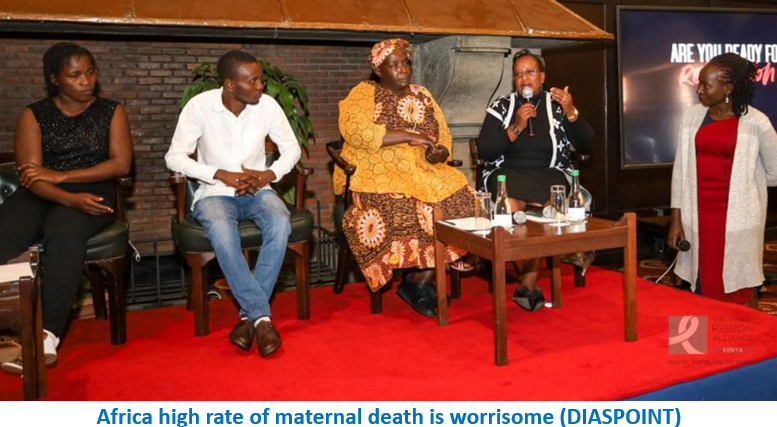What it will take to significantly reduce maternal deaths in Kenya
Post By Diaspoint | December 16, 2023

What you need to know:
- According to the Kenya Population and Housing Census Report (2019), the country loses 355 lives for every 100,000 live births due to complications during pregnancy and childbirth.
- At the current annual birth rate, this means that nearly 5,000 women and girls die every year.
What Gladys Mbone Omudi experienced when she went to deliver her third child in a public health facility 35 years ago has left her traumatised to this day.
“I am a mother of 15 children, but I have delivered my last twelve at home with the help of traditional midwives. Even if I were to fall pregnant today, I would stay away from the hospital because I almost lost my child due to inconsiderate and unprofessional hospital personnel,” says the 56-year-old from Korogocho, Nairobi.
She shared her story at a high-level dialogue on quality, equity, and dignity in maternal and newborn health (MNH) on December 11. The dialogue, held at the Windsor Hotel and Golf Club, was organised by the White Ribbon Alliance Kenya in partnership with the United Nations Population Fund (UNFPA).
The meeting, themed “From Promise to Action and Accountability for Mothers and Newborns,” was necessitated by the alarming rate of maternal deaths. According to the Kenya Population and Housing Census Report (2019), the country loses 355 lives for every 100,000 live births due to complications during pregnancy and childbirth. At the current annual birth rate, this means that nearly 5,000 women and girls die every year.
“I got my first child, who is currently 40 years old, when I was only 16. I went to a public health facility, and the experience was so bad because after delivery, I tore badly and lost so much blood, but I wasn’t attended to until eight hours later,” she narrated.
For her third pregnancy, she went to the hospital when she went into labour, but she was turned away.
“I was denied admission because I did not have a basin, a roll of cotton wool, and disinfectant. Instead, they admitted the other women behind me who had the items. At that very moment, I felt the urge to go to the toilet, and that is how I ended up delivering my child in the toilet—my child almost went down the toilet hole,” she said, holding back tears.
Read More from original source
